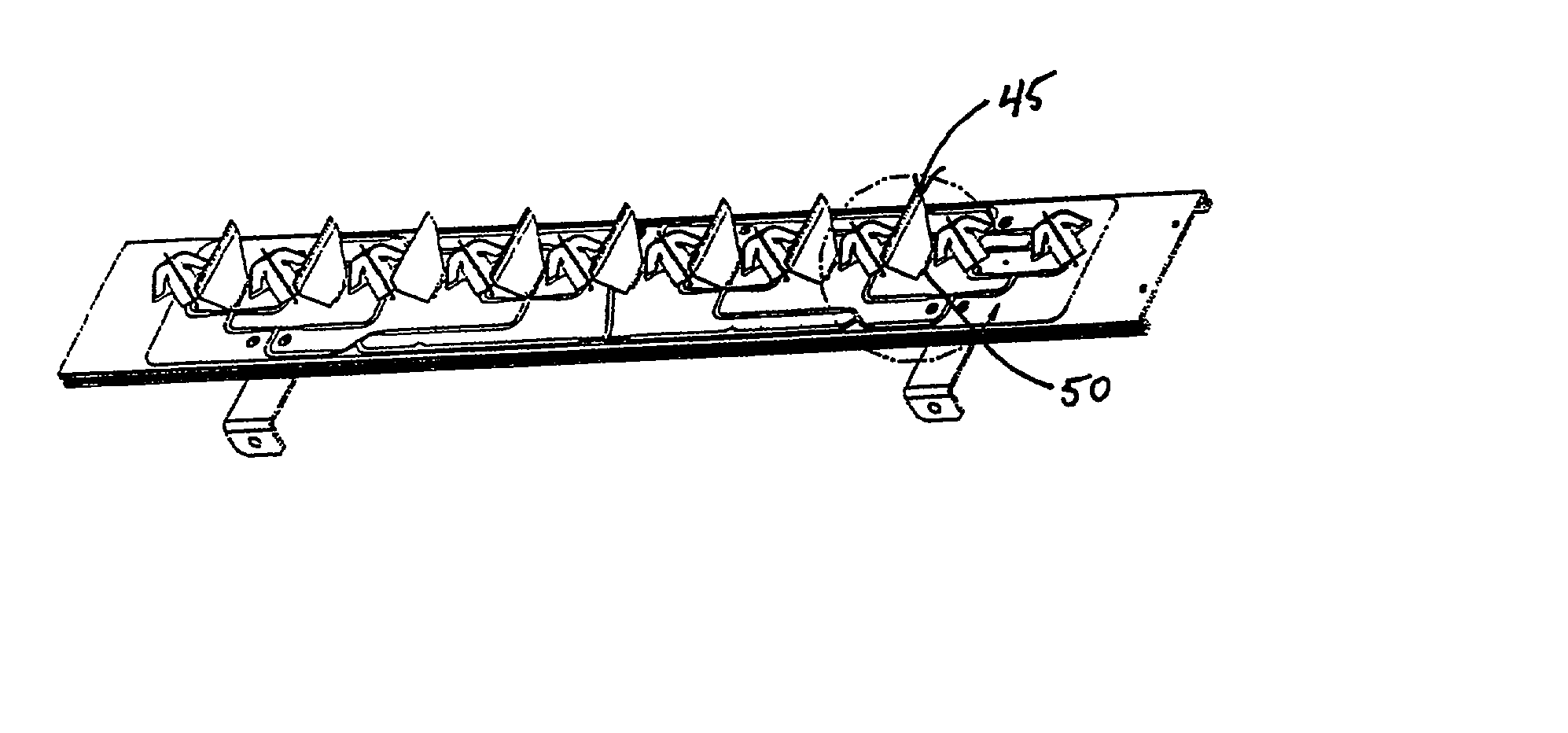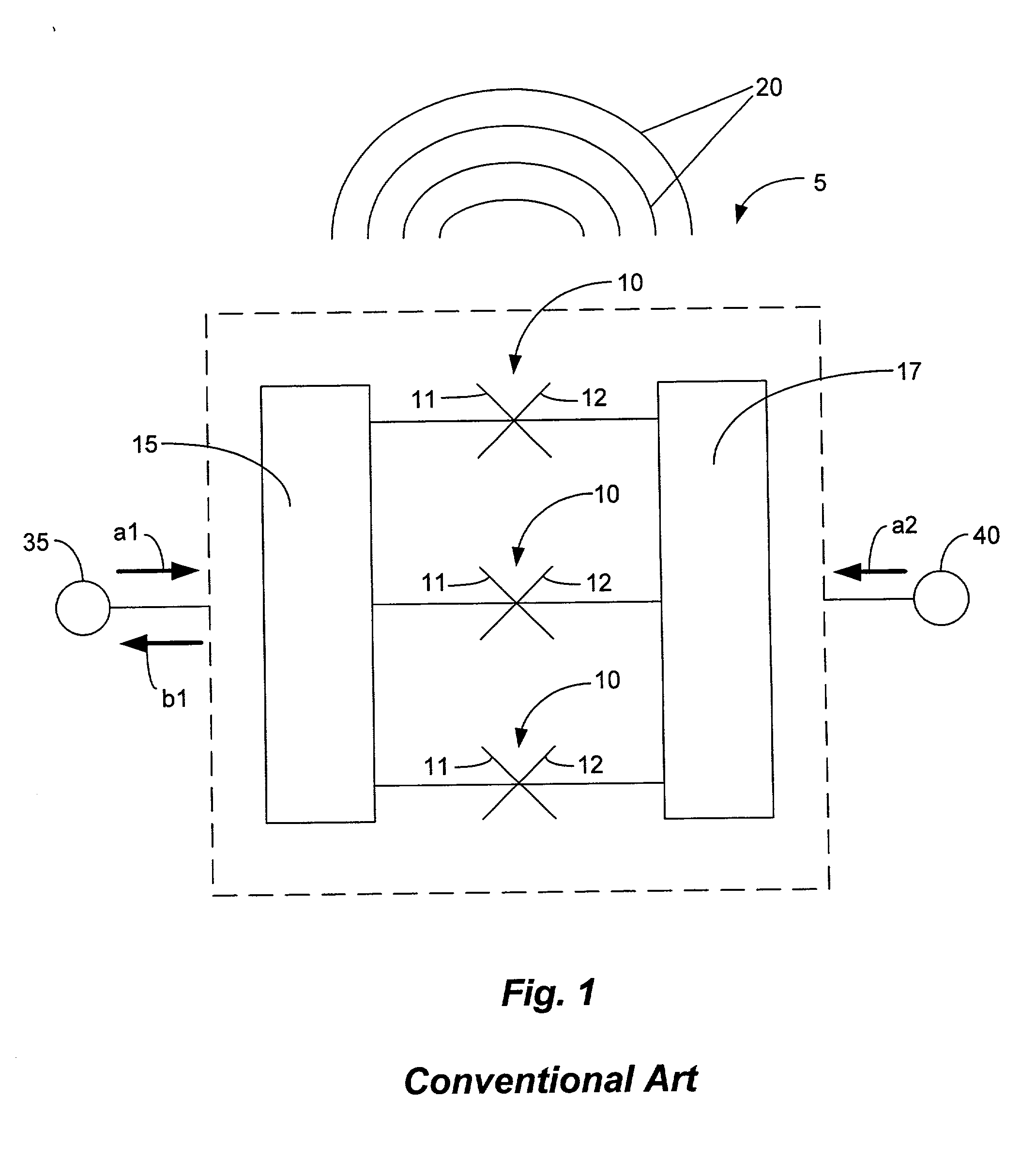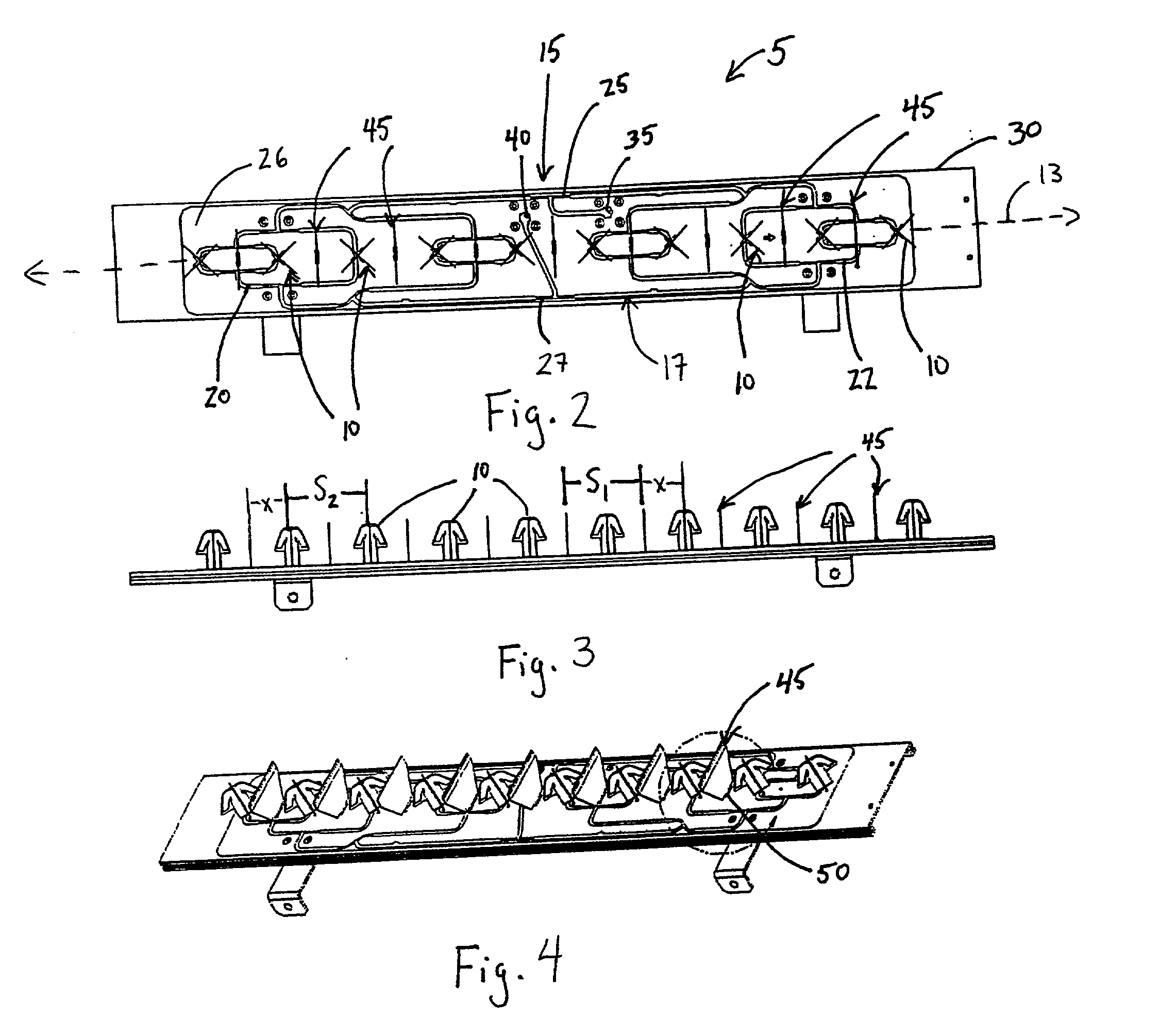Radio frequency isolation card
a radio frequency isolation and card technology, applied in the field of radio frequency isolation cards, can solve the problems of poor reception sensitivity, poor radiated output, and unsatisfactory leakage signal at one of these ports, and achieve the effects of improving the performance of an antenna, improving the isolation characteristic of the port-to-port antenna, and improving sensitivity
- Summary
- Abstract
- Description
- Claims
- Application Information
AI Technical Summary
Benefits of technology
Problems solved by technology
Method used
Image
Examples
Embodiment Construction
[0043] The isolation card of the present invention can solve the aforementioned problems of leakage signals in, especially, a dual polarized antenna and is useful for enhancing antenna performance for wireless communication applications, such as base station cellular telephone service.
[0044] Turning now to the drawings, in which like reference numerals refer to like elements, FIG. 1 is a diagram that illustrates the basic components of a conventional dual polarized antenna 5. Input / output ports 35 and 40 are the connection ports, or antenna terminals, for inputting and / or receiving signals 20. Each port is connected to its respective distribution network 15, 17 that communicates the signal to one of the two differently polarized sub-elements 11 and 12 in a dual polarized radiator of the antenna. In one exemplary embodiment, the dual polarized radiator comprises a crossed dipole 10. Signals of ports 35 and 40 communicate with a four-element array made of dipole radiator elements 10, ...
PUM
 Login to View More
Login to View More Abstract
Description
Claims
Application Information
 Login to View More
Login to View More - R&D
- Intellectual Property
- Life Sciences
- Materials
- Tech Scout
- Unparalleled Data Quality
- Higher Quality Content
- 60% Fewer Hallucinations
Browse by: Latest US Patents, China's latest patents, Technical Efficacy Thesaurus, Application Domain, Technology Topic, Popular Technical Reports.
© 2025 PatSnap. All rights reserved.Legal|Privacy policy|Modern Slavery Act Transparency Statement|Sitemap|About US| Contact US: help@patsnap.com



